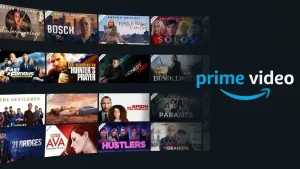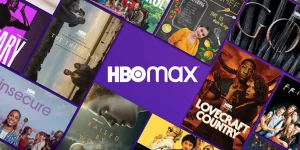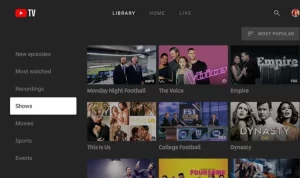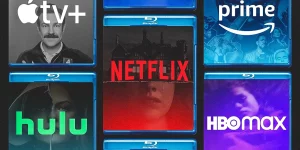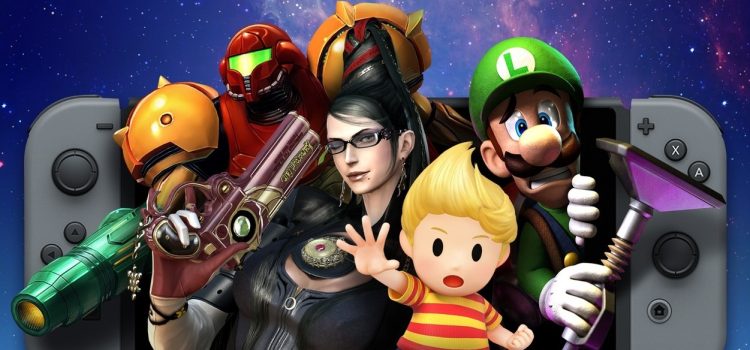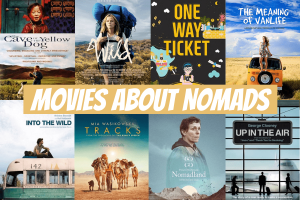
Introduction
The gaming world has changed a lot in recent years, and streaming platforms have become a big part of the experience. Many players now prefer the convenience of accessing a variety of games without needing expensive hardware. As of 2024, there are more streaming gaming services than ever, offering everything from cloud-based platforms to subscription services. This article will explore the top gaming streaming platforms in 2024, looking at their features, offerings, and performance.
What Is Streaming Gaming?

Streaming gaming allows players to play video games directly from the cloud without needing to download or install them on a personal device. This is made possible through cloud servers, which handle the game processing and stream the gameplay to players in real-time.
It has made gaming more accessible by eliminating the need for expensive consoles or high-end PCs. With the rise of 5G networks and improved cloud technology, streaming gaming has become a reliable and exciting option for gamers.
Top Streaming Gaming Platforms in 2024
1. NVIDIA GeForce NOW

Overview: NVIDIA GeForce NOW has been a major player in the streaming gaming space for several years, and it continues to be one of the best options in 2024. With the power of NVIDIA’s GPUs in the cloud, it offers smooth gameplay and high-quality graphics. GeForce NOW allows users to play games from a variety of stores like Steam, Epic Games Store, and Ubisoft Connect.
Key Features:
- Access to a large library of games.
- High-performance servers powered by NVIDIA RTX GPUs.
- Support for ray tracing and ultra-settings.
- Free tier available with limited session times.
Best For: Gamers who already own games on PC stores and want to play them on any device without needing a powerful gaming PC.
2. Xbox Cloud Gaming (formerly xCloud)
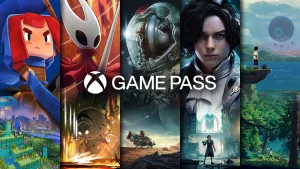
Overview: Xbox Cloud Gaming, a part of Xbox Game Pass Ultimate, allows players to stream a wide range of games from Microsoft’s Xbox console library. With the backing of Microsoft’s vast cloud infrastructure, it offers a seamless and stable gaming experience.
Key Features:
- Play hundreds of games included with Xbox Game Pass.
- High-quality streaming experience on both PC and mobile devices.
- Integration with Xbox controllers and mobile touch controls.
- Available on a variety of devices, including smartphones, tablets, and PCs.
Best For: Xbox Game Pass subscribers and those looking for a massive library of games for a relatively low monthly fee.
3. PlayStation Plus Premium

Overview: Sony’s PlayStation Plus Premium tier offers game streaming as part of its subscription service. With exclusive access to PlayStation’s first-party titles, this service is a fantastic option for fans of PlayStation games.
Key Features:
- Access to PlayStation’s vast library, including exclusive titles like Spider-Man and Horizon Zero Dawn.
- Available on PC and PlayStation consoles.
- Cloud saves and automatic updates.
- Exclusive game trials.
Best For: PlayStation console owners and those who want to access PlayStation exclusives on PC.
4. Amazon Luna

Overview: Amazon Luna, a relatively new player in the gaming streaming market, offers a unique subscription model with different channels, including the Luna+ channel and Ubisoft+ channel. It is integrated with Amazon’s cloud services, offering high-quality gaming for casual and hardcore gamers alike.
Key Features:
- Multi-channel subscriptions offering different game libraries.
- Available on PC, Mac, Fire TV, and mobile devices.
- Supports Bluetooth controllers and keyboard/mouse setups.
- Game streaming with low latency.
Best For: Casual gamers and Amazon Prime members looking for a budget-friendly way to stream games.
5. Google Stadia (Shutdown in 2024)

Overview: Google Stadia was once one of the most hyped platforms for game streaming, offering impressive graphics and fast gameplay. However, as of 2024, Google announced the shutdown of Stadia. Despite its closure, it set the stage for future streaming gaming platforms.
Key Features:
- High-quality 4K streaming.
- Access to premium games via subscriptions or purchases.
- Cross-play capabilities.
- Available on Chrome browsers and Chromecast devices.
Best For: Gamers who enjoyed Stadia while it was operational, or those seeking insight into future streaming tech.
6. Shadow

Overview: Shadow is a powerful cloud gaming service that focuses on providing a full PC experience in the cloud. Unlike other platforms, Shadow gives users access to a complete virtual desktop, allowing them to install any games they want, just like on a personal gaming PC.
Key Features:
- Full Windows PC access with cloud gaming capabilities.
- Customizable virtual machines for tailored performance.
- 1080p or 4K streaming.
- Supports any game and app that runs on Windows.
Best For: Gamers who want a fully customized cloud gaming experience and don’t mind paying a premium for it.
7. Vortex Cloud Gaming

Overview: Vortex is a cloud gaming platform that provides access to a wide range of games from multiple genres. It’s known for being budget-friendly while still offering decent performance, making it a good choice for casual gamers.
Key Features:
- Affordable subscription plans.
- Game library spanning various genres.
- Support for multiple devices.
- 1080p streaming quality.
Best For: Budget-conscious gamers who want to try cloud gaming without breaking the bank.
Expanding Game Genres

Streaming gaming platforms offer a wide range of game genres, so there’s something for every type of player. Whether you like action-packed shooters, relaxing puzzle games, or deep strategy titles, cloud gaming services have plenty of options.
As these platforms grow, they’re adding even more games, including popular indie titles and big releases. This growing game library makes streaming gaming a great choice for anyone wanting to explore new games or discover favorites.
Increased Competition Among Platforms

As streaming gaming grows, more companies are entering the market, which increases competition. Big tech companies like Google, Amazon, and Microsoft offer cloud gaming services, each with its own features and game libraries.
This competition benefits players because it encourages companies to improve their services, lower prices, and offer better game selections. Gamers now have more options, and the competition will likely continue to improve the streaming gaming industry.
Challenges of Streaming Gaming
Despite its benefits, streaming gaming has some challenges. One main issue is the need for fast and stable internet. Players in areas with slow or unreliable internet may face lag or poor-quality gameplay.
Also, not all games are available on every platform, limiting choices for some players. Pricing can be a problem too, as some platforms charge higher subscription fees. Finally, the long-term success of cloud gaming depends on companies continuing to invest in technology and infrastructure.
Future of Streaming Gaming

The future of streaming gaming looks promising. As internet speeds improve and cloud technology advances, we can expect even better performance and more game options. Streaming platforms will likely become more affordable and accessible to a wider audience.
The role of virtual reality (VR) and augmented reality (AR) in gaming could also expand, offering new ways to interact with games. Overall, the future of gaming will likely see a shift toward more cloud-based, subscription-based services, making gaming more accessible to players worldwide.
Comparative Table: Best Streaming Platforms for Gaming in 2024
| Platform | Key Features | Price Range | Best For | Supported Devices |
|---|---|---|---|---|
| GeForce NOW | High-performance servers, ray tracing, access to multiple stores | Free, Premium tiers available | PC gamers with existing game libraries | PC, Mac, Android, Shield TV, Browser |
| Xbox Cloud Gaming | Xbox Game Pass access, touch controls, Xbox controller integration | Subscription-based | Xbox Game Pass users | PC, Mac, Android, iOS, Xbox consoles |
| PlayStation Plus Premium | Exclusive PlayStation titles, cloud saves, game trials | Subscription-based | PlayStation owners | PC, PlayStation consoles, mobile devices |
| Amazon Luna | Multi-channel subscriptions, integrated with Amazon Prime | Subscription-based | Casual and budget-conscious gamers | PC, Mac, Fire TV, mobile devices |
| Google Stadia | 4K streaming, cross-play capabilities, premium games | Subscription-based (shutting down in 2024) | Former Stadia users | PC, Chromecast, mobile devices |
| Shadow | Full PC access, customizable virtual machines | Premium subscription | Gamers seeking a full PC experience | PC, Mac, Android, iOS, TV boxes |
| Vortex Cloud Gaming | Affordable plans, 1080p streaming | Low-cost subscription | Budget-conscious gamers | PC, Mac, Android, iOS |
Analysis of Streaming Gaming Platforms in 2024
| Criteria | GeForce NOW | Xbox Cloud Gaming | PlayStation Plus Premium | Amazon Luna | Google Stadia | Shadow | Vortex Cloud Gaming |
|---|---|---|---|---|---|---|---|
| Game Library | Excellent | Excellent | Good | Good | Good | Customizable | Good |
| Performance | Excellent | Very Good | Very Good | Good | Very Good | Excellent | Good |
| Cost | Flexible | Subscription-based | Subscription-based | Affordable | Subscription-based | Premium | Affordable |
| Device Compatibility | Broad | Broad | Moderate | Broad | Moderate | Broad | Broad |
| Unique Features | Ray tracing, Multi-store access | Xbox Game Pass, Touch Controls | PlayStation exclusives, Game Trials | Multi-channel subscriptions | Premium game purchases | Full Windows PC experience | Budget-friendly plans |
Conclusion
As we move into 2024, the variety of streaming platforms for gaming continues to expand, each catering to different needs, budgets, and preferences. Whether you’re a casual gamer, a hardcore enthusiast, or someone who simply wants to access their library of games on the go, there’s a platform for you. While NVIDIA GeForce NOW and Xbox Cloud Gaming dominate the high-end gaming scene, platforms like Amazon Luna and Vortex Cloud Gaming provide more budget-friendly options. The future of gaming is in the cloud, and 2024 is shaping up to be a year of even greater accessibility, performance, and choice for gamers everywhere.
























































